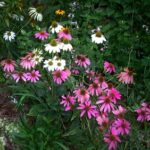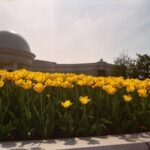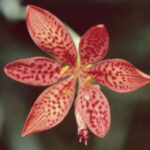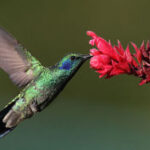Perennials are the backbone of the multi-season garden. Although they are a little bit more expensive to purchase initially than annuals, they pay off in the long run by coming back stronger and more beautiful every year. If you are new to perennial gardening or an experienced gardener looking to add some variety to your landscape, here are a few of my favorite, most dependable and easy-to-grow perennial choices.
1) Hellebores (Latin: hellebores)
These plants are often called Lenten roses, as they are one of the earliest spring bloomers. They are hardy in zones 4-9 and are valuable as plants which thrive in light-full shade. These long-lived perennials feature mauve and cream bell-shaped flowers and evergreen foliage.
2) Lamb’s Ears (Latin: stachys byzantine)
These plants are grown primarily for their unusual, wooly grayish-green foliage. They do bloom in mid-spring and early summer, however, with tall spikes of purple flowers. Lamb’s Ears are hardy in zones 4-8 and thrive in sun-partial shade. An additional benefit to growing this plant is that it grows quickly, can be easily divided, and transplants well.
3) Columbines (Latin: aquilegia)
These are some of the prettiest late- spring-blooming perennials. They are hardy in zones 3-8 and do best in dappled sun rather than full sun. There is some variety of bloom color in modern cultivars, but the most common colors are bicolor blue or violet hue. Delicate flowers hover over lacy foliage.
4) Astilbes (Latin: astilbe)
This perennial is another good option for the shade-partial shade garden. This most distinctive characteristic of this plant is the feathery plumes of flowers, which are actually branched clusters called panicles. They are usually pink, crimson, or white and appear from late-spring to early-summer. The foliage is fernlike. This plant is hardy in zones 4-8. This plant will do well as long as it is planted in moist but well-drained and compost-amended soil.
5) False Indigo (Latin: baptisia)
The spring flowers on this perennial, which is native to the prairies, are a deep indigo color and feature a distinctive clustered, pod-like shape. The foliage is rounded in shape and blue-green in hue. This plant is a little slow to establish, but once it is, it is very long-lived. It is drought-tolerant once established because of its deep taproots. It is hardy in zones 3-9.
6) Butterfly Bush (Latin: buddleia)
This is a large perennial, better considered as a small shrub when considering site selection. It requires full sun and is hardy in zones 5-9. From mid-summer to fall this plant blooms with showy 4-10 inch trumpet-shaped panicles in reddish-purple, indigo, pink, or white. This perennial’s common name is a result of its butterfly-attracting qualities. This plant will grow quickly and other than a regular application of compost or fertilizer, the only special care it needs is regular pruning of branches to prevent it from getting too leggy.
7) Bleeding Hearts (Latin: dicentra)
This striking spring-bloomer is distinctive with its dangling heart-shaped pink flowers hanging from fernlike, fringed leaves. Like astilbes, it likes moist but well-drained, rich soil, and does best is light-full shade. It is hardy in zones 2-9.
8) Purple Coneflowers (Latin: Echinacea)
This perennial is a must-have for those gardeners in areas of frequent drought. It thrives in full sun in zones 3-9 and is deer-resistant. In late summer to early fall, this plant has daisy-like blooms atop top, stiff stem dry at the end of the growing season and reseed if you do not cut and discard them. Purple Coneflowers make great cutting flowers for a summer arrangement.
9) Lavender (Latin: lavendula)
These plants are valuable in the garden for their fragrant foliage and flowers and their silver to gray-green needlelike leaves. There are many varieties of lavender, but most are hardy in zones 5-9. They need to be placed in well-drained soil in full-sun. The erect spikes of tiny lavender flowers appear in midsummer on woody stems and can be cut and used for sachets.
10) Black-eyed Susans (Latin: rudbeckia)
Also called Coneflowers, these perennials are related to and resemble Purple Coneflowers. Like their cousins, they require full sun and well-drained soil. They have the added benefit of being drought and deer-resistant. Their dark, lance-like leaves are not showy, but the yellow-orange daisy-like blooms with dark centers are attention-grabbing. This perennial is hardy in zones 3-9 and blooms from summer into fall. One benefit of this perennial is that it reseeds prolifically and is easily divided and transplanted.
I hope that you will add one or more of these time-tested perennials in your garden this year. They will provide you with years of blooming pleasure and require only minimal maintenance.







